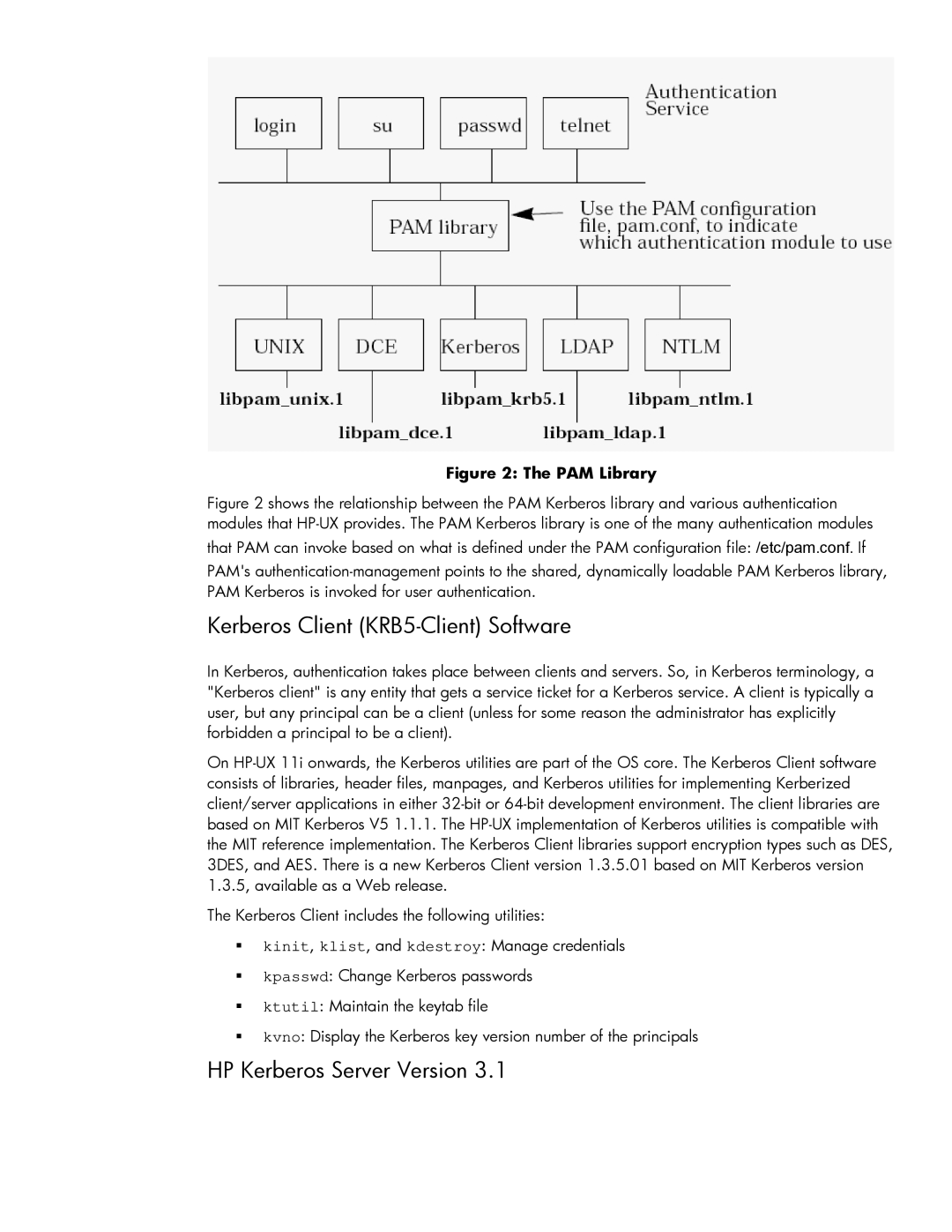
Figure 2: The PAM Library
Figure 2 shows the relationship between the PAM Kerberos library and various authentication modules that HP-UX provides. The PAM Kerberos library is one of the many authentication modules
that PAM can invoke based on what is defined under the PAM configuration file: /etc/pam.conf. If
PAM's authentication-management points to the shared, dynamically loadable PAM Kerberos library, PAM Kerberos is invoked for user authentication.
Kerberos Client (KRB5-Client) Software
In Kerberos, authentication takes place between clients and servers. So, in Kerberos terminology, a "Kerberos client" is any entity that gets a service ticket for a Kerberos service. A client is typically a user, but any principal can be a client (unless for some reason the administrator has explicitly forbidden a principal to be a client).
On
The Kerberos Client includes the following utilities:
kinit, klist, and kdestroy: Manage credentials
kpasswd: Change Kerberos passwords
ktutil: Maintain the keytab file
kvno: Display the Kerberos key version number of the principals
